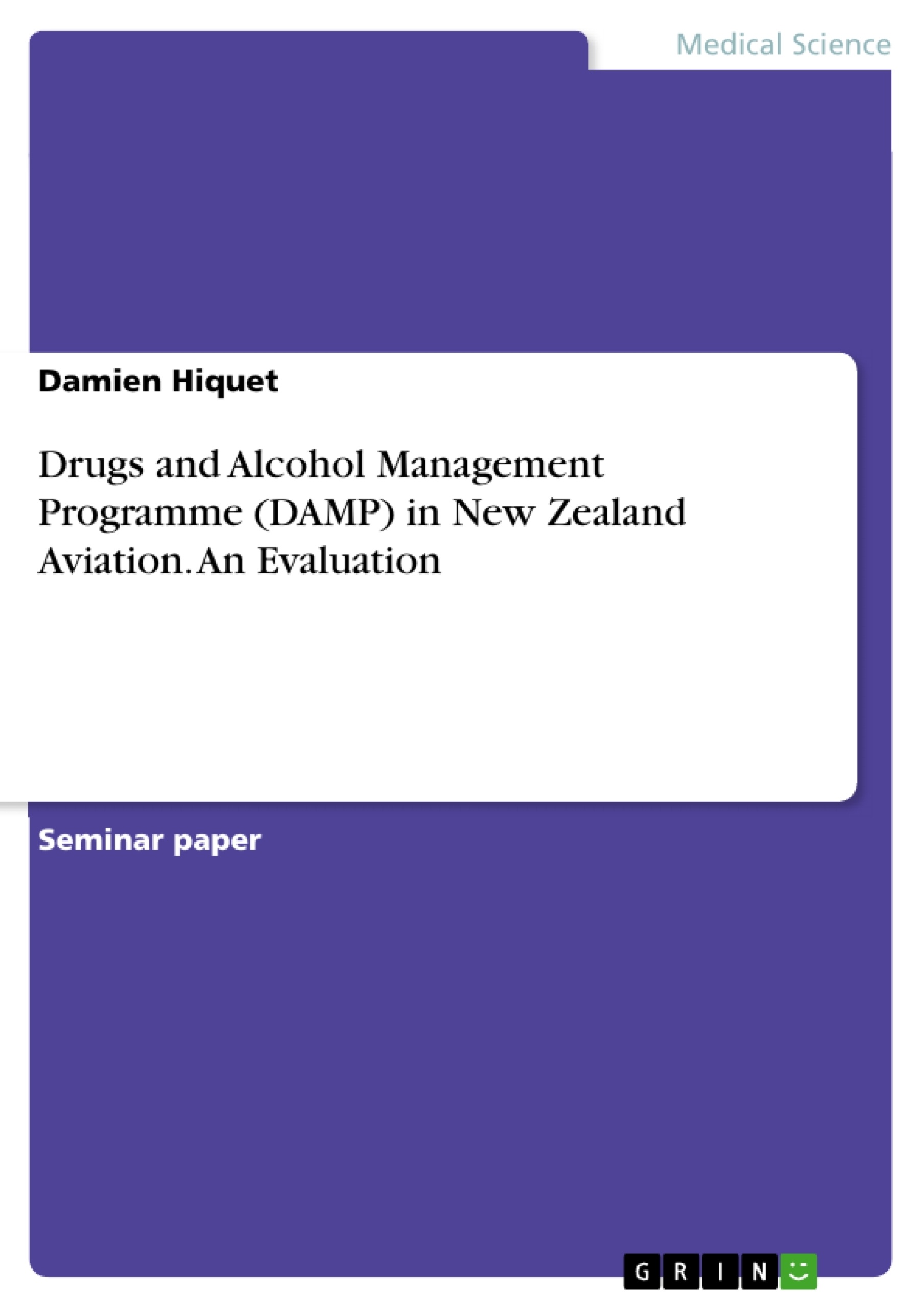This paper evaluates the Drugs and Alcohol Management Programme (DAMP) in New Zealand aviation. Alcohol, medication and drugs are among the most common medical causes of worldwide fatal commercial air transport aircraft accidents. Recent evidence from alcohol and drugs testing programmes of aviation safety-critical workers has demonstrated positive rates at levels that have warranted an increase in testing.
Often, alcoholism and drug usage are undiscovered, unrecognized, and unreported. Aviation is no different and it has been estimated that alcohol abuse and dependence affect approximately five to eight percent of all pilots. Maintenance personnel, cabin crew and management are similarly affected. Given such an impact, it is not surprising that serious consideration has been given to preventative and remedial measures.
Table of Contents
- Executive summary
- The purpose and objectives of the programme
- All employees
- In-house company alcohol testers
- Medical Review Officers (MRO)
- Programme leader
- Health and Safety Representatives (HSR)
- Contractors
- Service provider
- Peer support
- A discussion on the evaluation process used
- Reaction
- Learning
- Behavior
- Results
- Conclusions and results arising from the evaluation
- Recommendations
Objectives and Key Themes
This document aims to evaluate the Drugs and Alcohol Management Programme (DAMP) implemented in New Zealand aviation, discussing its objectives, evaluation process, and resulting conclusions and recommendations. It highlights the importance of addressing alcohol and drug abuse in the aviation sector to ensure safety and prevent costly consequences.
- The significance of drug and alcohol abuse in aviation safety
- The implementation and evaluation of the DAMP program in New Zealand aviation
- The role of regulatory bodies in shaping drug and alcohol management policies
- Best practices for identifying and addressing impairment risks in the workplace
- The impact of the DAMP program on workplace culture and employee safety
Chapter Summaries
- Executive summary: This chapter provides an overview of the importance of addressing drug and alcohol abuse in aviation, highlighting the significant safety and economic risks associated with it. It introduces the DAMP program and its objectives in New Zealand aviation.
- The purpose and objectives of the programme: This chapter details the key objectives of the DAMP program, outlining its implementation across various stakeholders, including employees, testers, medical review officers, and service providers.
- A discussion on the evaluation process used: This chapter explores the evaluation process used to assess the DAMP program, focusing on the reaction, learning, behavior, and results observed following its implementation.
- Conclusions and results arising from the evaluation: This chapter presents the findings of the evaluation, highlighting the effectiveness of the DAMP program in achieving its objectives and addressing the challenges related to drug and alcohol abuse in the aviation sector.
Keywords
The document focuses on the Drugs and Alcohol Management Programme (DAMP), aviation safety, drug and alcohol abuse, workplace impairment, regulatory requirements, evaluation process, and best practices for addressing these issues within the New Zealand aviation sector. It also emphasizes the role of stakeholders like the Civil Aviation Authority (CAA), Maritime New Zealand, and WorkSafe in fostering a safer and healthier working environment.
- Quote paper
- Damien Hiquet (Author), 2021, Drugs and Alcohol Management Programme (DAMP) in New Zealand Aviation. An Evaluation, Munich, GRIN Verlag, https://www.grin.com/document/1151312



